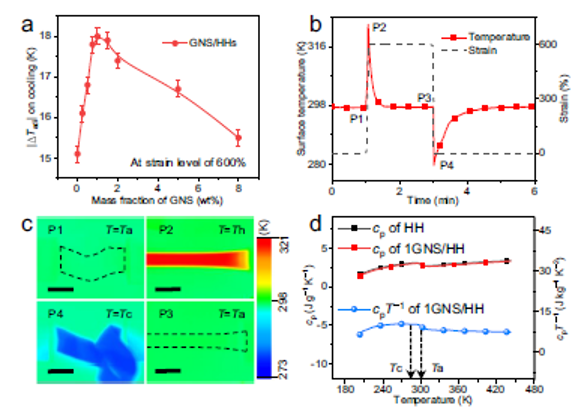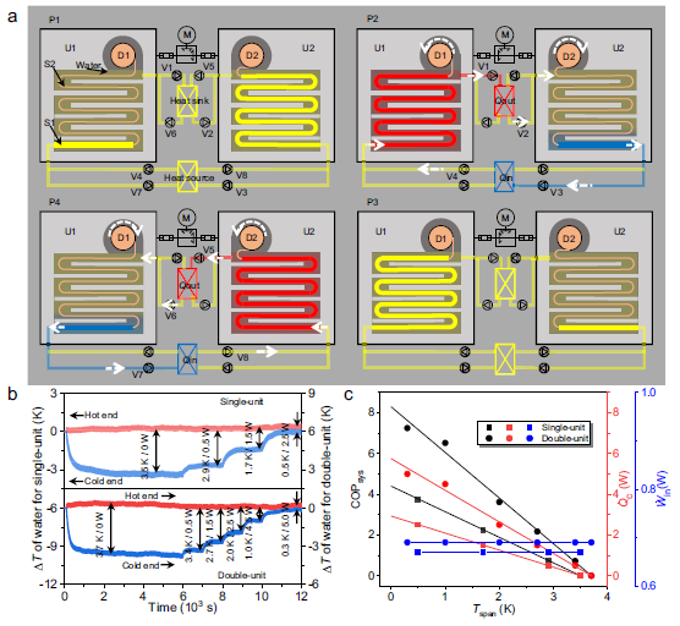Recently, Professor Xiong Chuanxi’s research team at Wuhan University of Technology (WUT) achieved a major advancement in solid-state refrigeration based on the elastocaloric effect of polymers. Their study, titled “Shearo-caloric ffect enhances elastocaloric responses in polymer composites for solid-state cooling,” was published in Nature Communications.
WUT is listed as the first-affiliated institution, with doctoral students Zhang Shixian and Fu Yuheng as co-first authors, and Professor Xiong Chuanxi and Professor Wang Qing (The Pennsylvania State University) as co-corresponding authors.
A Green Alternative to Conventional Cooling
With global climate challenges such as greenhouse gas emissions and refrigerant leakage, the demand for environmentally friendly cooling technologies has never been more urgent. In alignment with China’s Carbon peaking and carbon neutrality goals, solid-state cooling technologies—offering zero global warming potential—have gained significant traction over the past two decades.
Currently, shape memory alloys (SMAs) are the most advanced solid-state refrigerants, but their high driving stress requirements (gigapascal-level) limit practical applications.
Breakthrough: Shearocaloric Polymer Composites
To address these limitations, Professor Xiong’s team developed polymer-based elastocaloric refrigerants, requiring only megapascal-level driving stress, significantly improving safety and practicality. Most notably, they introduced the "shearo-caloric effect" for the first time.
Their approach involved:
Embedding carbon nanofillers into a block copolymer matrix(polystyrene-b-(ethylene-co-butylene)-b-polystyrene, SEBS)
Reconstructing the polymer’s elastic network, allowing relative sliding between nanofiller layers
Triggering shear elongation of molecular chains, which enhances elastocaloric cooling performance
Performance Achievements
Using direct infrared thermography, the team demonstrated remarkable elastocaloric temperature changes, ranking among the top three worldwide.
Toward Practical Applications: Energy-Recoverable Cooling Devices
Harnessing the large-strain behavior of polymers, the team developed:
A dual-unit cooling device
A heat pump system with energy recovery capabilities
The system achieved a coefficient of performance (COP) of 8.3, addressing long-standing concerns over solid-state cooling “inefficiency”.

Figure 1: Elastocaloric effect in SEBS-based composites

Figure 2: Design and performance of the energy-recoverable cooling system
Full
citation:
Zhang Shixian, Fu Yuheng, Wang Jin, Li Jianming,
Zhang Dongdong, Ma Lu, Duan Zhewen, Wang Qing*, and Xiong Chuanxi*.Shearo-caloric effect enhances elastocaloric responses in polymer
composites for solid-state cooling. Nature Communications,
2024, 15, Article number: 50870.
DOI:https://doi.org/10.1038/s41467-024-50870-4